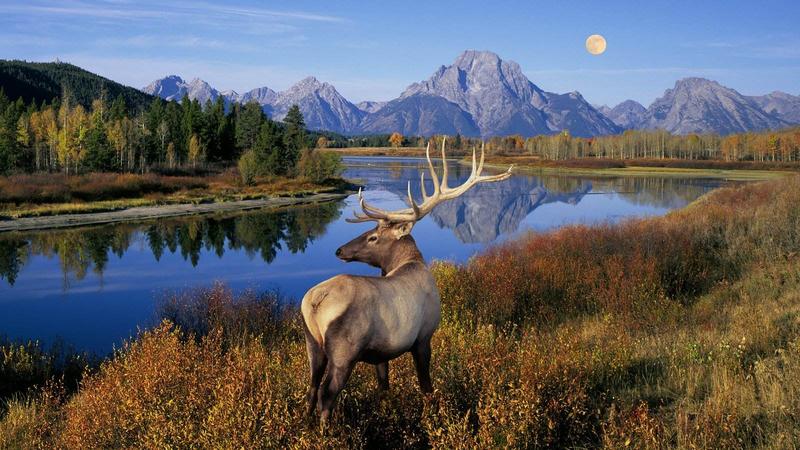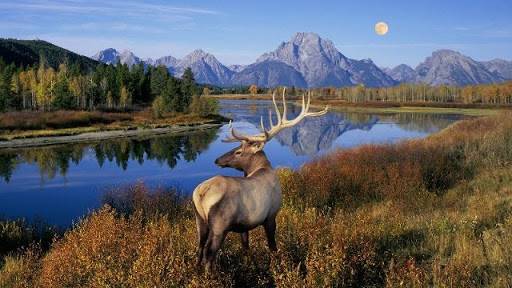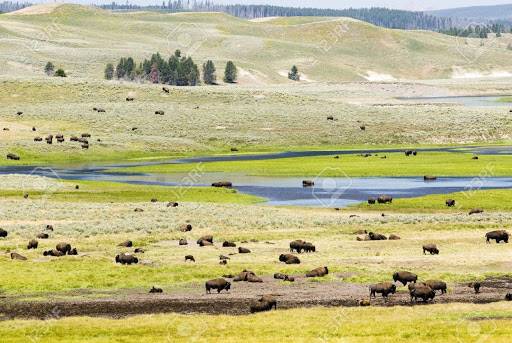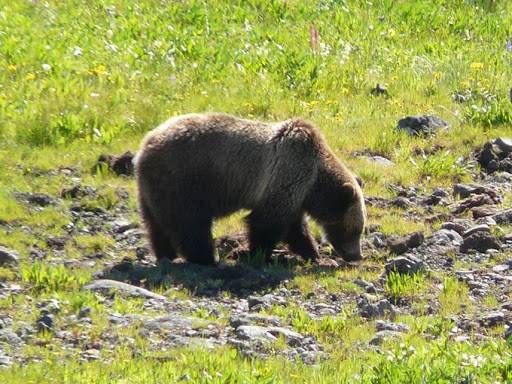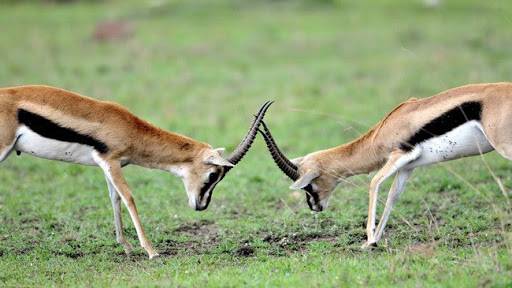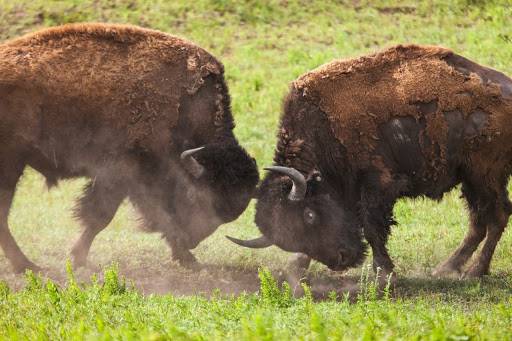West Thumb Geyser Basin
West Thumb Geyser Basin is located by the shore of Yellowstone Lake. It was formed 150,000 years ago. The combination of hot springs and lake water creates a wonderful misty landscape. This place has many geysers gathered together, with various colors of spouts, including green and black. It is particularly beautiful when the water is constantly gushing. Many moose often appear here, so friends who want to see moose can take a walk around this geyser basin.
Northeast Entrance Road
Besides West Thumb, friends staying near the park's northeast entrance should keep an eye on both sides when entering the park, as moose might also appear.
Hayden Valley
Hayden Valley is located slightly north of the east side of Yellowstone. It is a meadow in front of the forest with a river flowing through it, making it an ideal spot for animals to forage in the early morning and evening. If you bring binoculars, you can usually see grizzly bears wandering around here. Besides grizzly bears, you also have the chance to see wolves, elk, and bison in Hayden Valley.
Yellowstone Lake
Yellowstone Lake is the largest inland lake in Yellowstone National Park. It is actually the center of the Yellowstone Caldera, and the volcanic rocks and magma that cover the land of Yellowstone Park erupted from here. The only outlet of Yellowstone Lake is the Yellowstone River, whose waters flow through the Yellowstone River to the Yellowstone Grand Canyon, forming the famous Yellowstone Falls. If lucky, visitors can see grizzly bears from a distance on the shores of Yellowstone Lake.
Fishing Bridge spans the Yellowstone River and is the outlet of Yellowstone Lake. In June and July each year, you can see wild trout jumping in the river near the bridge. Sometimes, if you look west from the bridge, you can see grizzly bears roaming in the distance. However, it is worth mentioning that Fishing Bridge is not for fishing; it is just a great place to observe fish.
Yellowstone Falls
The river water flowing out of Yellowstone Lake passes through a gentle area before entering the canyon, which is considered one of the most magnificent sights in Yellowstone. Accompanied by a tremendous roar, it forms the Upper Falls and Lower Falls. Due to the presence of water, this area attracts many wild animals. Bighorn sheep often appear in groups.
The river flowing out of Yellowstone Lake in Yellowstone National Park, USA, passes through a gentle hilly area and then enters a steep canyon about 38 kilometers long, known as the Grand Canyon of the Yellowstone. This is one of the most magnificent and splendid sights in Yellowstone Park. Here, the rushing river water splashes, forming two magnificent waterfalls that roar as they plunge into the bottom of the canyon.
Norris Geyser Basin is the hottest and most unstable geyser area in Yellowstone National Park. The world's largest geyser, Steamboat Geyser, is also located in this area, although it remains dormant for long periods and erupts infrequently. The geysers in Norris are very colorful, with shades of blue-green and milky white. Due to the unstable underground activity, new geysers form and old ones die out every year. Additionally, because the water is rich in microorganisms, there are some orange and green streams, making the scenery very beautiful. This area is also a frequent haunt for pronghorn antelope.
Mammoth Hot Springs
This place is characterized by limestone terraces and is known as the largest carbonate-depositing hot spring in the world. It is the most active and the oldest geothermal area. Originally, multiple hot springs flowed down the slope in stages, creating colorful terraces due to the large number of microorganisms. Unfortunately, during a tectonic event in 2002, most of the hot springs ceased to flow, leading to the death of many microorganisms. The dead microorganisms turned into grayish-white powder, which remained on the dried-up terraces. Pronghorn antelopes are also frequently seen here.
Old Faithful Geyser
Old Faithful Geyser is a must-visit spot in Yellowstone National Park. It erupts every 93 minutes, each eruption lasting over 4 minutes, with a typical height reaching 40-50 meters. Regardless of the season, Old Faithful Geyser erupts with a certain regularity, earning it the name 'Old Faithful.' The eruption is as magnificent as a thousand horses galloping, and under the sunlight, the water vapor refracts into a spectrum of colors, making it quite spectacular. On the way to Old Faithful Geyser, you can often see large bison lazily lying by the roadside.
The Grand Prismatic Spring is the largest hot spring in the United States and the third largest in the world. The beauty of the Grand Prismatic lies in the changing colors of its surface with the seasons. In spring, it changes from green to orange-red; in summer, it displays colors like orange, red, and yellow; and in winter, it appears blue-green. There are boardwalks built throughout the Grand Prismatic area, allowing visitors to get a close view of the spring by walking along them. Due to geothermal activity, the temperature around the Grand Prismatic Spring is relatively high, often attracting herds of elk. It is believed that these animals have been living in Yellowstone National Park for at least a thousand years.
